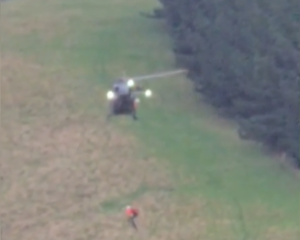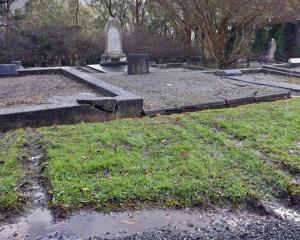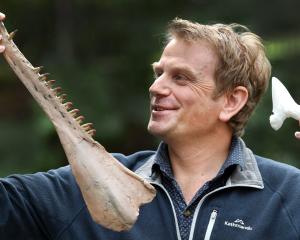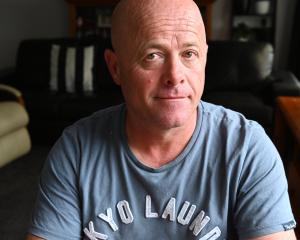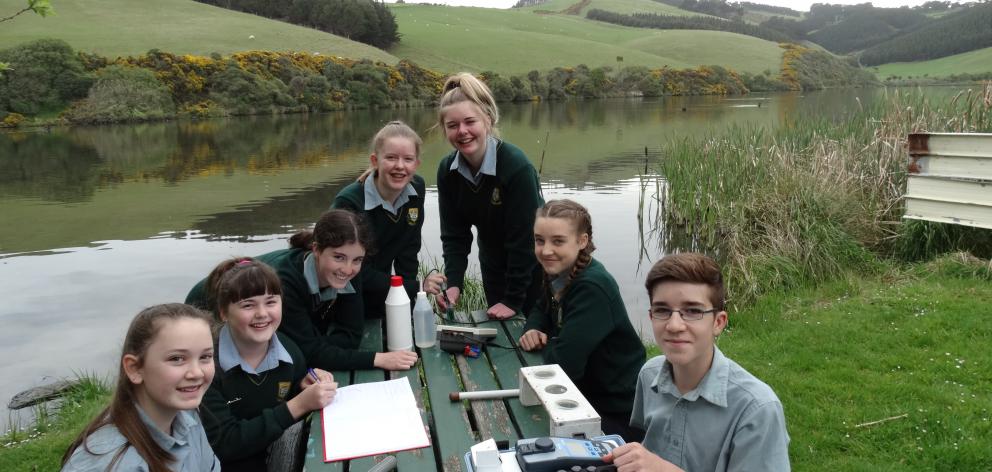
Rain, hail or shine, pupils from three Dunedin schools have made fortnightly visits to Tomahawk Lagoon to monitor its biodiversity and water quality throughout this year.
The low-lying coastal wetland, bordered by houses and farmland, is a habitat for many waterfowl, along with native fish, trout and eels, and its ongoing health is an important focus for Dunedin group the Ecotago Trust.
Since early 2016, Ecotago scientists Andrew Innes and Dr Jonathan Kim have been working with pupils from Bayfield High School, John McGlashan College and Tahuna Intermediate on a project to closely monitor the lagoon.
No matter what the weather, testing has been carried out every fortnight since January at four sites around the upper (northern) part of Tomahawk Lagoon, building up a comprehensive baseline picture of the water and its wildlife.
The project is funded through a grant from the Participatory Science Platform (PSP), which is designed to encourage communities — particularly young people, educators and scientists — to work together on science projects.
Mr Innes said the studies undertaken by the pupils were providing in-depth and wide-ranging data, from observations about the weather, the numbers of birds and small animals, and vegetation, to measurements of nitrogen and phosphate in the water and its pH.
To measure lake depth at set positions, the pupils took turns at donning waders and stepping into the chilly water.
The response from the young scientists had been enthusiastic, with all enjoying the opportunity to get stuck in to real-life science, Mr Innes said.‘‘These fine young people have become wonderful ambassadors for the lagoon — they really understand the importance of the science they are doing,’’ he said.
Having the opportunity to use laboratory equipment in the chemistry department at the University of Otago to test the substances in the water was also inspiring for the young people, Mr Innes said.
While the results required further analysis, a picture had emerged of fluctuating nitrate and phosphate levels in the lagoon’s water — higher levels of phosphates earlier in the year had dropped over winter, and the levels of nitrates had risen.
The reasons for this were being discussed, Mr Innes said.
Dr Kim said the Tomahawk Lagoon monitoring project was important in that it not only helped to build up a clearer picture of the lagoon, but also enabled the young people to engage in proper science.
‘‘It is definitely inspiring for them to be doing this hands-on science, getting results that have real-life application,’’ he said.
Bayfield High School head of science Geoff Burn said it was clear the pupils enjoyed being out in the community doing ‘‘live science’’ work.
‘‘This project has been really inspiring for these pupils, and it is good to see them so enthusiastic,’’ he said.
‘‘This is proving to be a valuable project for everyone, and it is great to be involved.’’
Mr Innes said it was hoped the project could continue next year, enabling the young scientists to develop further insights into the patterns and fluctuations in the lagoon’s water.
The scientists and pupils involved in the ongoing study of Tomahawk Lagoon will present their findings about the biodiversity and chemical and physical patterns of the lagoon during an open day on November 26, from 10am to 12.30pm. All interested members of the community are welcome.
BRENDA.HARWOOD @thestar.co.nz

